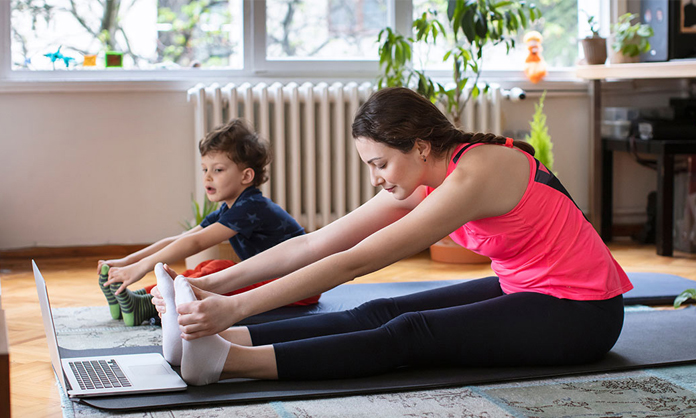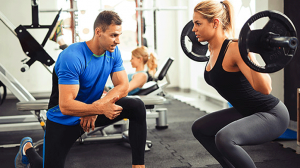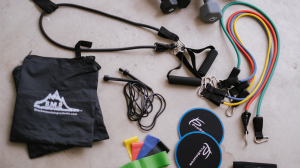Table of Contents
Not even a pandemic can stop you from getting in shape when you create a plan to exercise at home. Workouts at home can be just as effective as going to the gym, even if you don’t have fancy home gym equipment.
The key to working out at home is getting in a balance of exercise types. Adult exercise guidelines include a minimum of 150 minutes of moderate-intensity aerobic exercise weekly plus at least two days of muscle-strengthening exercise for all of your major muscle groups.
Keep reading to learn how to get in your physical fitness at home while social distancing.
Start Slow
If you aren’t used to exercising, start your home workout routine slowly. Pushing yourself too hard at the beginning might cause you to burn out or get hurt. Listen to your body to know when to push more and when to ease up.
Testing out different types of exercises, in the beginning, helps you find a routine that you enjoy. When you have fun exercising, you’re more likely to stick with your workouts.
Before every workout, even if you’re experienced, start with a warmup routine to prepare your muscles. This can be as simple as starting slowly on your cardio routine. If you’re going to walk or jog, start out with a slower pace walk and gradually increase.
Get Your Heart Pumping
Aerobic activity gets your heart pumping and increases your respiration rate. If you do moderate-intensity exercises, such as brisk walks, you might plan five 30-minute workouts each week to meet your 150-minute goal. If you prefer vigorous-intensity workouts, such as jogging, you can reach your weekly recommendation in just 75 minutes.
One option for home cardio is an exercise machine. Elliptical trainers, treadmills, rowing machines, and exercise bikes are popular options.
Exercise videos or streaming workouts are another way to get in cardio. You can also jump rope, dance, or do any physical activity that increases your heart rate.
Strengthen Your Muscles
When getting in your strength training, focus on hitting all major muscle groups twice per week or more. Lower body areas include your legs and hips. Upper body areas include your back, abdomen, chest, arms, and shoulders.
You don’t have to lift heavy weights to strengthen your muscles. Many strength-training exercises don’t require any equipment at all, instead of using your own body weight as resistance.
Others use easily accessible equipment, such as resistance bands or medicine balls. For upper body strength, a pull-up bar is a challenging option. You can find more info here on pull up bars to help you choose one.
Work on Flexibility
Once your muscles are warm and your workout is done, squeeze in some flexibility work before you cool down. Stretching or doing yoga helps improve your flexibility. Being flexible makes it easier for you to move, especially as you get older.
Start to Exercise at Home
When you exercise at home, you keep your body strong even when going to the gym isn’t an option. Mixing in cardio and strength training helps balance your exercise needs and meet the minimum exercise recommendations.
Check out the rest of our website for more health and fitness advice…







